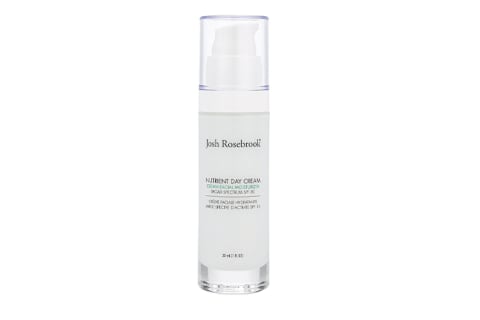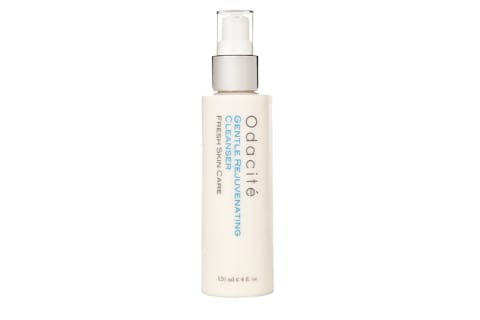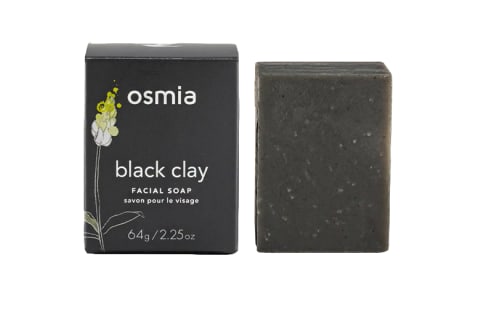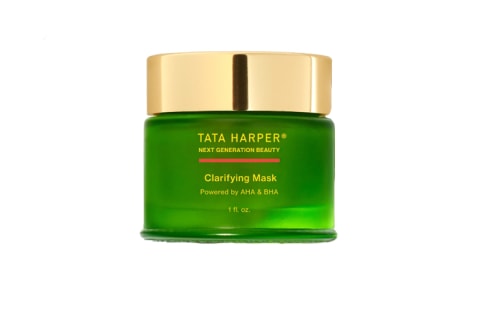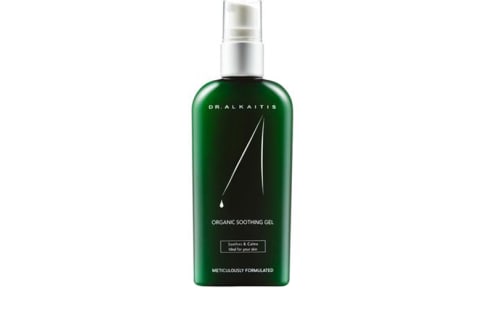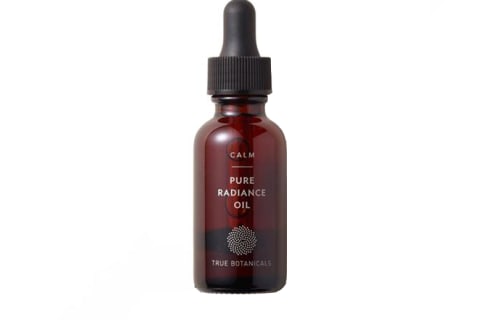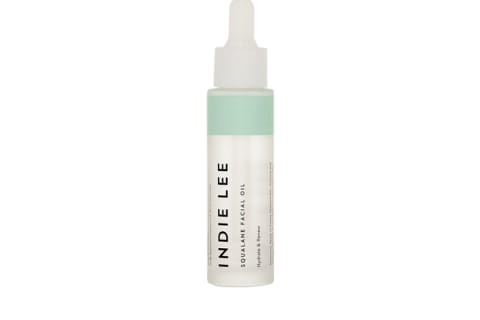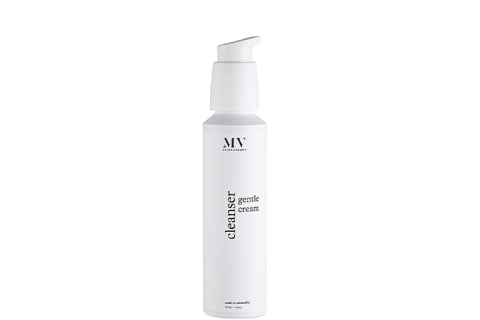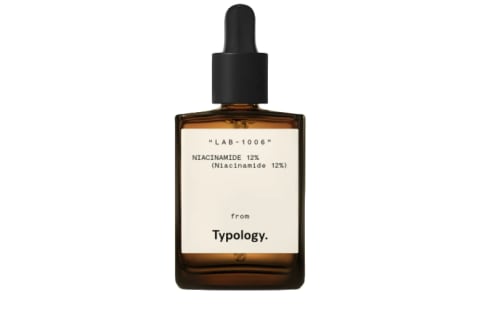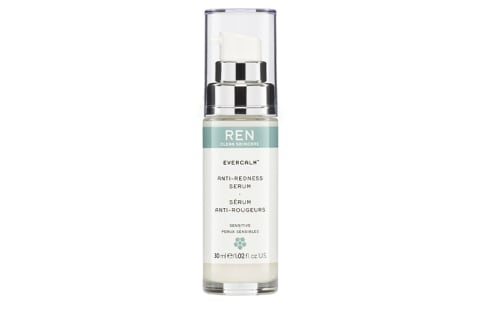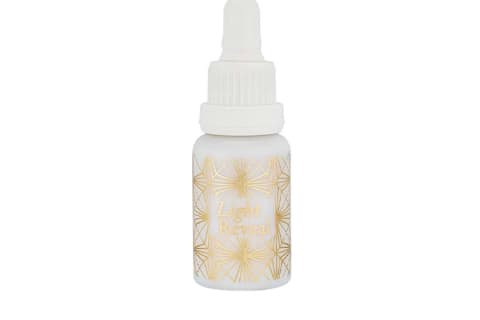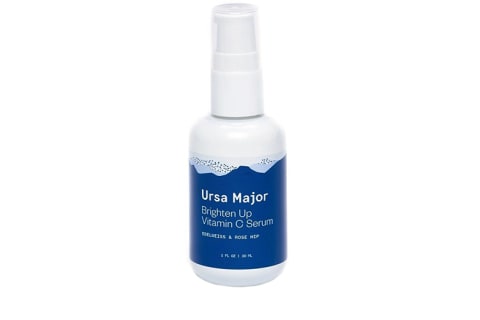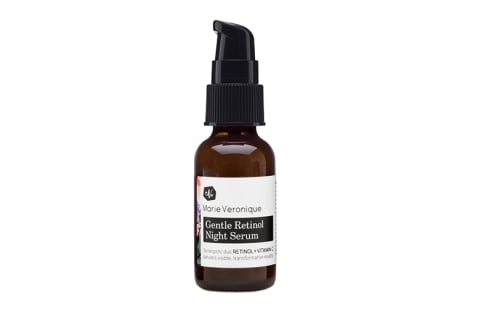The Best Organic Skin Care According To Your Skin Type: An MD Explains

Skin care is a health issue, no different from the food I put on my dinner plate or the time I take to exercise every day. So many of us have become numb to the potentially harmful ingredients we’re using on our skin, and it's important to educate yourself on the alternatives. Here, I've outlined why you should switch to organic and natural ingredients, as well as the best ingredients to look for each skin type.
How do you choose your organic skin-care products and what sort of things you should avoid? Based on reliable data from medical journals.
Best organic skin care for the face.
Your face may be only 4.5 percent of your skin’s surface area, but it’s the 4.5 percent with which you greet the world every day, so it deserves special attention. Finding the best face-care products for your skin type requires patience and persistence. Just because the first organic product you try doesn’t work does not indicate that organic face products are not for you—it just means you haven’t found the right one. Taking a skin-type approach can help you figure out where to begin.
Best organic skin care for average skin.
Average skin means your skin doesn't swing to any extreme; you don’t struggle with redness, reactions, breakouts, dryness, or dullness. A basic routine for this skin involves cleansing every night (always!) and providing adequate moisture and sun protection. Exfoliation once a week will keep cell turnover healthy and allow products to penetrate more effectively.
Suggested natural ingredients for normal skin:
- Aloe vera
- Squalane
- Jojoba oil
- Zinc Oxide
- Essential oils of lavender, geranium, and carrot seed
Best natural products for normal skin:
Best organic skin care for oily or breakout-prone skin.
If your skin is oily or you have a lot of acne, it means your sebaceous glands (or, pores) are overactive, and sebum is getting trapped in the pores, where it becomes infected and inflamed. As with any health condition, you must start at the root of the problem, addressing diet, stress levels, and hormones with your health care provider—then you can move on to selecting products to support it from the outside.
When you strip the skin of too much, it provides feedback to the sebaceous glands that the skin does not have enough oil and kicks them into overdrive, exacerbating the problem. Instead, provide the skin with gentle exfoliation and nourish it with the right balance of oils, training the sebaceous glands to settle down and make less sebum.
Suggested natural ingredients for oily or breakout-prone skin:
- Dead sea mud
- Activated charcoal
- Honey
- Black cumin seed oil
- Rosehip seed oil
- Essential oils of lavender, cajeput, thyme
Best natural products for oily or breakout-prone skin:
Best organic skin care for sensitive or reactive skin.
Whether your skin reacts to everything or just a few common skin-care ingredients, it's not all bad: It can make you into an educated label reader! Less is absolutely more when you’re dealing with sensitive skin. If you react to something, it’s harder to do the detective work when you’re using lots of ingredients. Sometimes, your skin just needs simplicity and time to heal itself.
Suggested natural ingredients for sensitive or reactive skin:
- Aloe vera
- Vegetable glycerin
- Honey
- Sunflower oil
- Sweet almond oil
Best natural products for sensitive or reactive skin:
Best organic skin care for dry and dehydrated skin.
Skin can get dry or dehydrated for various reasons, from diet to sun damage to age-related changes. Stay hydrated, keep your electrolytes balanced, and eat plenty of healthy fats like avocados, hemp seeds, or healthy fish. Be sure to apply product while your skin is still damp, to lock in moisture.
Suggested natural ingredients for dry or dehydrated skin:
- Aloe vera
- Hyaluronic acid
- Mango butter
- Sea buckthorn
- Borage seed oil
- Essential oils of frankincense, sandalwood, and carrot seed
- Squalane
Best natural products for dry or dehydrated skin:
Best organic skin care for skin prone to redness.
Redness is a result of increased capillary size or blood flow, so ingredients that soothe the skin or cause gentle vasoconstriction are helpful. Things to avoid? Heating spices like cinnamon or cayenne (in diet or skin products), red wine, and niacinamide (vitamin B3), which can cause flushing.
Suggested natural ingredients for redness-prone skin:
- Aloe vera
- Rose hydrosol
- Argan oil
- Essential oils of rose, sandalwood, and helichrysum
Best natural products for redness-prone skin:
Best organic skin care for dull skin and large pores.
Dullness is often a sign that your skin’s cell turnover rate is on the low side. Fortunately, there are loads of natural ways to speed it up, and you can often see great results within a month. Be sure to use a combination of exfoliation methods, from enzymatic to mechanical.
Suggested natural ingredients for dull skin:
- Adzuki beans
- Pumpkin
- Papaya
- Gotu kola
- Honey
- Algae extract
- Essential oils of cedarwood, carrot seed, and lavender
- Antioxidants like vitamin C
- Retinol
Best natural products for dull skin:
What you never want in your products:
What is left out of products is just as important as what is in them.
- Parabens1, triclosan2, and phthalates3 may cause endocrine disruption4.
- Sulfates (especially sodium lauryl/laureth sulfate, or “SLS”) due to skin irritation. (Many studies like this one5 use SLS as a baseline skin irritant.)
- Petrochemicals are known for being pore clogging.
- Ethoxylated ingredients (anything that ends in "eth," phenoxyethanol, polysorbates) can contain 1,4-dioxane contamination6 and may be a carcinogen.
- Synthetic color is often derived from petroleum or coal tar, which has a possible link to behavioral issues7.
- Traditional fragrance8 is highly allergenic and often contains petrochemicals and phthalates.
Why would you choose an organic skin-care brand over a conventional one?
For the same reasons you’d choose organic food over conventional food: to limit your exposure to chemicals that are potentially hazardous to your health and the planet. Let me disclose from the outset that I am a believer in the organic movement. But I’m not a believer because it’s on trend or because I’ve succumbed to fear-mongering or because I grow and harvest my own lavender. I believe in organic skin care because I’m a physician who has cared for thousands of sick people and have seen illness in all its forms. I believe we have the power to harm ourselves or heal ourselves with our daily choices, and choosing organic is one way to support our health and the health of the planet we share. Many people make this choice when it comes to food, but the products we use on our skin should be next in line.
Your skin absorbs much of what you put on it, and there’s mounting evidence that ingredients like parabens, phthalates, and synthetic fragrance are causing myriad problems, from endocrine disruption to allergic reactions to chemical sensitivity. By choosing an organic skin-care brand or a brand that uses mostly organic ingredients, you are filtering out potential irritants in products you’re using on your skin.
Sorting through the brands is not easy, though—there are so many of them, and it’s hard to tell the genuinely healthy brands from the greenwashers. One way to create a filter is to look for the green USDA organic seal on a product, which tells you a few things: First, the product contains more than 95 percent certified-organic ingredients; second, the product complies with the USDA National Organic Program’s list of what can and can’t be in a certified-organic product; third, the company using the seal meets the USDA organic-handling requirements. This is a great place to start, but it’s not the whole story.
NOP guidelines are designed for crops and livestock, not for cosmetics. Look for brands that use mostly food-grade, certified-organic ingredients. So, does a food-grade certification make sense for all skin-care products? Probably not. While the skin absorbs much of what we put on it, the absorptive surface area of the skin is about 1/15th of the GI tract and absorbs slightly different things, so the concerns are similar but not identical. Some newer, cosmetic-specific certifications have potential to become industry leaders for healthy standards: The National Safety Foundation has one, as well as the Environmental Working Group. Just as important, since there's no regulatory committee to monitor the beauty industry, look for a brand that is transparent and educated about the products, and willing to answer questions about sourcing and ingredients.
The take-away.
Choosing to invest in organic food and skin-care products is one of many ways to nourish your body and spirit in the long term. You are what you eat—and what you slather on your skin!

Dr. Sarah Villafranco spent ten years as an emergency physician. After a decade, she felt frustrated at the lack of emphasis on simple solutions to health issues, like nutrition, exercise, and stress management. After losing her mom to pancreatic cancer at age 64, Sarah took some time off to reevaluate things. She took a class making soap, and fell in love not only with soapmaking, but also with the way her skin felt after using handmade soap. She became obsessed with natural skincare, and locked herself in a room for two years (not really, but almost), studying and teaching herself how to make products. She launched Osmia in 2012 to help people find simple solutions to skin issues like acne, eczema, and dermatitis.
After a decade in the industry, Osmia has a stellar reputation for quality, transparency, sustainability, and authenticity in the clean beauty space. Their products help people find healthier, happier skin with meticulously researched and tested formulas, using sustainable ingredients of exceptional quality. Learn more about Sarah and Osmia here.
8 Sources
- https://www.ncbi.nlm.nih.gov/pubmed/27432241
- https://www.ncbi.nlm.nih.gov/pubmed/27156397
- https://www.ncbi.nlm.nih.gov/pubmed/27455052
- https://www.ncbi.nlm.nih.gov/pubmed/27424048
- https://www.ncbi.nlm.nih.gov/pubmed/12694214
- https://www.ncbi.nlm.nih.gov/pubmed/19703511
- https://www.ncbi.nlm.nih.gov/pmc/articles/PMC2957945/
- https://www.ncbi.nlm.nih.gov/pubmed/26310707
